Successive blending is a great decoding strategy to use in the early stages of reading instruction, particularly for those who have difficulty blending sounds to read words. This technique helps students gradually combine individual phonemes or sounds in a word to build fluency, accuracy, and confidence in reading.
What Is Successive Blending?
Successive blending is a phonics strategy that teaches students to read words by blending one sound at a time in sequence. Instead of trying to blend all the sounds of a word at once, the child focuses on one sound, blends it with the next, and continues until they reach the end of the word. This gradual process allows students to build confidence as they progress through the word, making blending less overwhelming.
How Does Successive Blending Work?
Here’s an example of how it works with the word “sat”:
- Identify the first two sounds: Your student starts by saying the first two sounds.
- Blending the first two sounds: Next, your student blends the first two sounds together. For example, if the word is “sat,” they blend /s/ and /a/ to say “sa.”
- Add the Next Sound: Repeat the first two sounds together (“sa”) and then say the last sound. I recommend stretching the vowel sound. For example, “saaaaaa…..t”
- Say the whole word: “sat”.
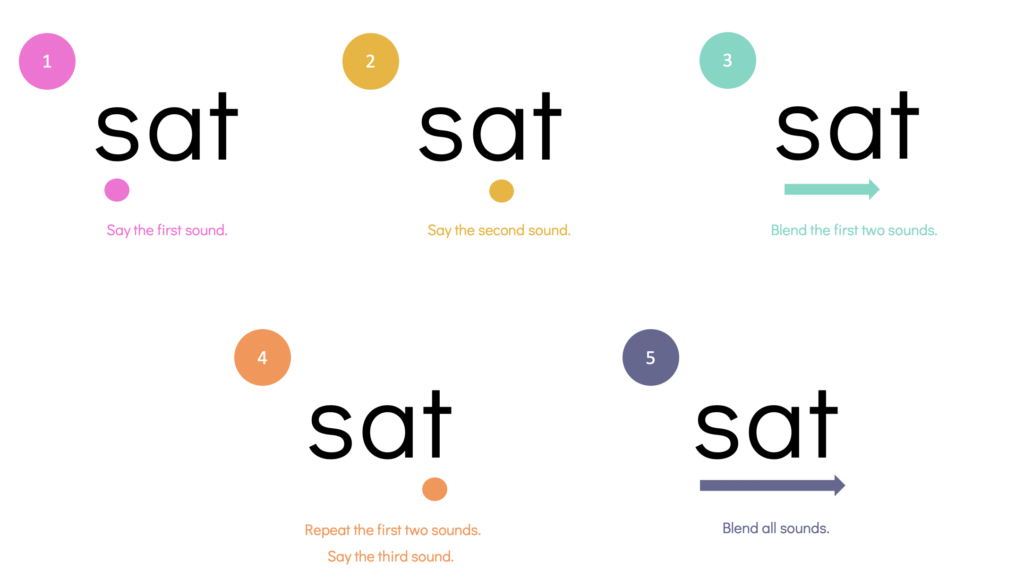
This method helps students focus on one sound at a time, reducing cognitive load and making the task of blending less overwhelming, especially for beginning readers.
Click here for a video of me explaining this strategy along with another strategy.
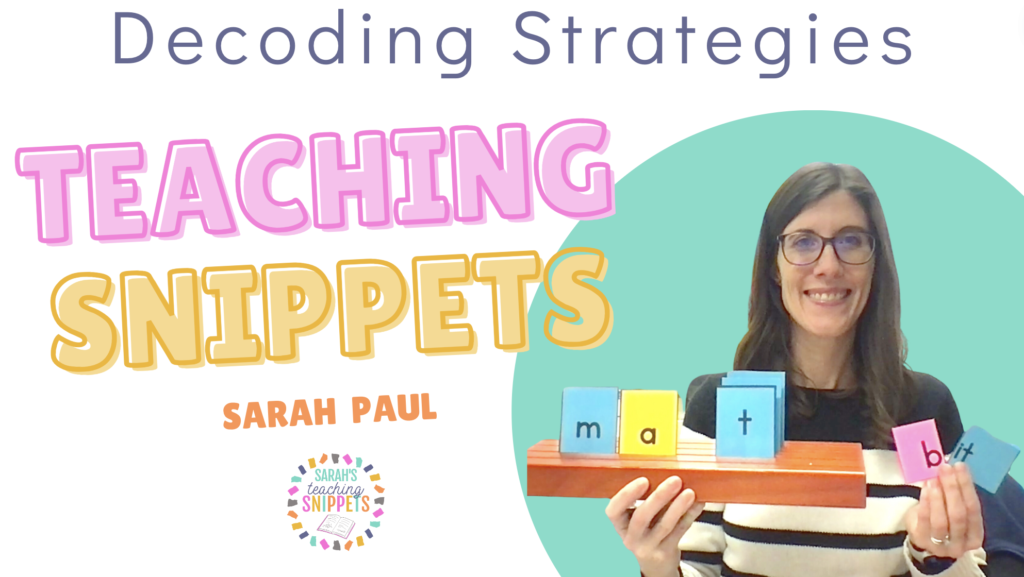
Who Needs This Blending Strategy
Not everyone will need to apply this strategy to blend words successfully. I use it for students who are having difficulty with phoneme blending. Students may know the sounds that each letter makes, but when they go to blend the sounds, it is difficult to do so. So they might say the sounds /s/ /a/ /t/, but then they may say “at” or “sand” or even “tap”.
I also use this strategy if students are struggling to remember letter sounds. If they take a long time to recall each sound, then by the time they get to the third sound, they’ve lost the first two sounds. By blending the first two sounds, it makes it so that they only have to remember one bigger chunk of sounds as opposed to two different sounds.
Why Successive Blending Works
Successive blending is effective because it:
- Breaks down the task: Many early readers struggle with blending sounds, especially when blending an entire word. By breaking it down into manageable steps, students experience success more quickly and build confidence in their reading ability.
- Reinforces phonemic awareness: Successive blending helps students become more aware of individual sounds in words, a crucial skill for both decoding (reading) and encoding (spelling).
- Improves fluency: As students practice successive blending, they become more fluent at recognizing sound patterns and blending them automatically, which is key for reading speed and comprehension.
- Scaffolded Learning: The strategy provides a natural scaffold. As I mentioned, I don’t use this strategy with every student, but it sure is effective with those who need it!
Fun ways to practice Successive Blending
There are many ways to use this strategy. When I first introduce it, it is easiest to use letter tiles like these. I always have letter tiles on my magnetic white board so they are easy to access. I start by pulling down two tiles. I’ll model blending those sounds then I’ll move one more tile to finish the word. Then, I’ll take that tile away and we’ll repeat the first two sounds. Next, I’ll replace it with another letter (as shown below).
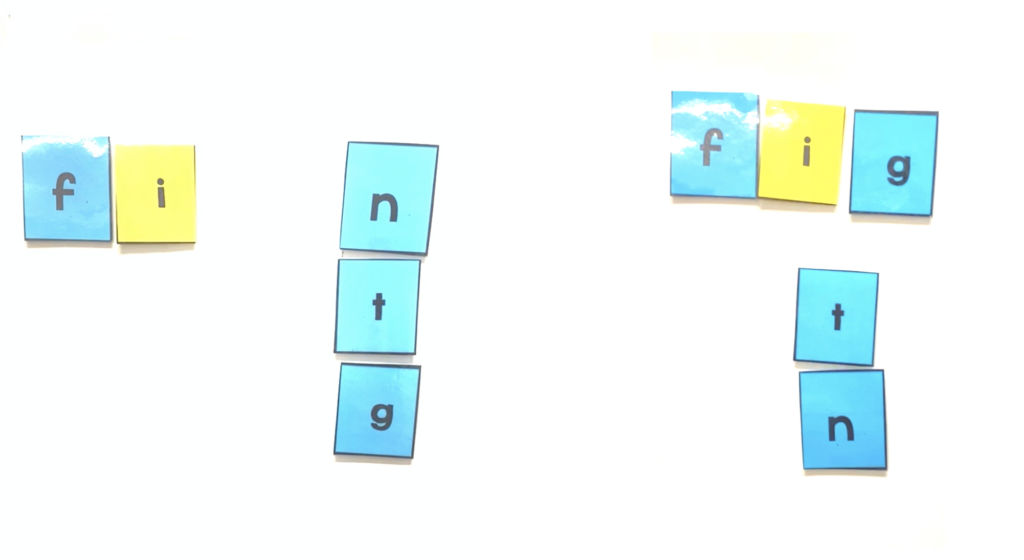
Using a library pocket
I also like to use library pockets to practice slowly revealing the letters. Ahead of time, write words on a note card. One by one, put them in the library pockets . Slowly pull the word out, revealing one letter at a time. Say the sound as you see the letter. You can also make this a center or partner activity. Have a stack words pre-written and your students can put the cards in and practice successive blending.
Click here for a video explanation.

Using a pocket chart
Here is a way to practice this with a small group who needs this strategy to help them decode. Start at the top. Tap each sound and blend those sounds. (/s/ /a/…./sa/). Have your students repeat that as you flip over the card. Instruct them to say the sound as you flip it over.
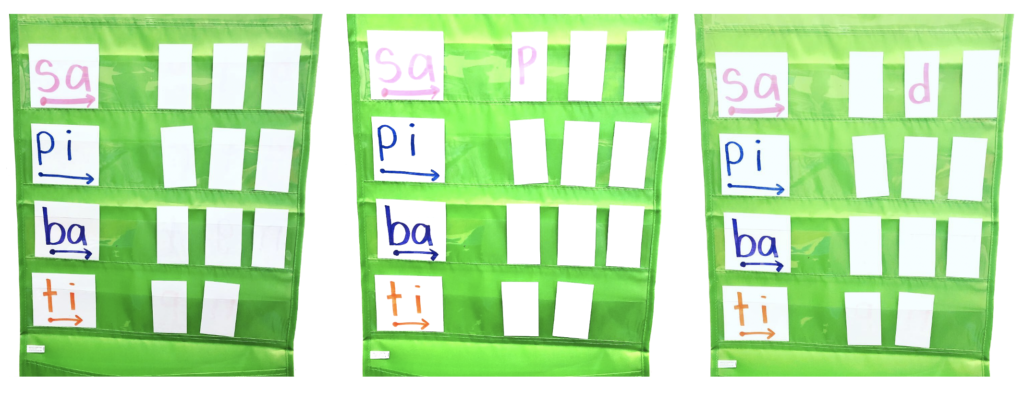
Digital Options
I love using Google Slides to practice successive blending. This can used for independent practice or you can project it to be used with a larger group. Each slide adds a new sound.
You can find these slides here.

Gamify it
Adding dice or spinners to an activity is a fun alternative. This free resource is a simple way to practice successive blending and you can use it repeatedly because you will likely get different words each time. Start at the beginning. Blend the first two sounds. Then, roll the die. Repeat the first sounds you just said and add on the last sound. If it makes a real word, write hte letter you rolled in the gray space. If not, roll again. Find this free resource here.
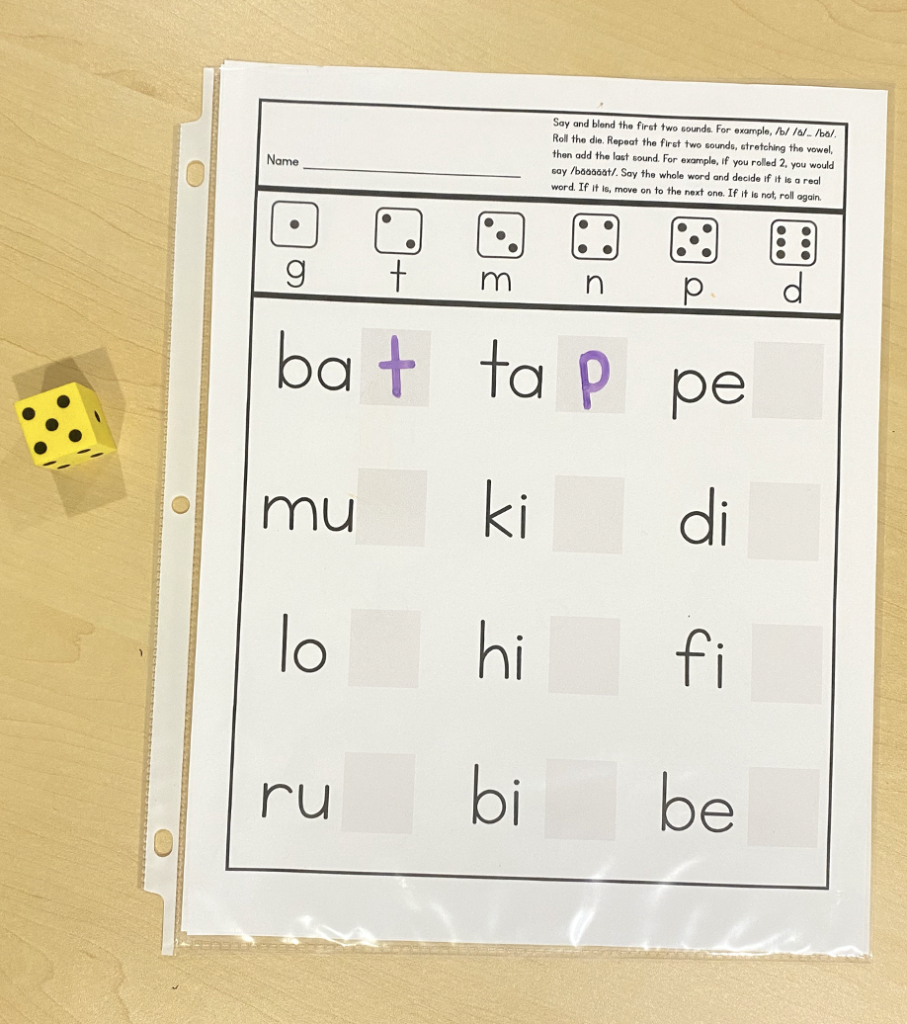
And then again, you could also just fold a notecard!
Related Posts
If you enjoyed this post, you may also like these posts:









